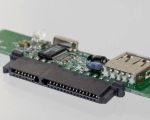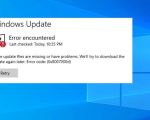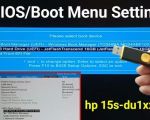How Many Computer Repair Troubleshooters Should Be on Duty? A Guide to Staffing Your Tech Support Team
- Understanding the Role of Computer Repair Troubleshooters
- Factors to Consider in Staffing Your Tech Support Team
- How to Determine the Number of Troubleshooters You Need
- Optimizing Your Tech Support Staffing
- Case Study: Real-World Experience in Tech Support Staffing
- Why Effective Staffing Matters for Your Business
Understanding the Role of Computer Repair Troubleshooters
Computer repair troubleshooters play a crucial role in tech support teams. These professionals are responsible for diagnosing and resolving technical issues related to computers, software, hardware, and networking. Their expertise ensures that customers receive prompt solutions, making them an essential part of any business offering IT support services.
The role of a troubleshooter is not just about fixing problems—it also involves excellent customer service, communication skills, and the ability to explain complex technical issues in simple terms. This makes hiring the right number of troubleshooters a critical decision for any tech company aiming to provide top-tier support.
Factors to Consider in Staffing Your Tech Support Team
When deciding how many troubleshooters should be on duty, several factors come into play. Here are some of the most important considerations:
- Volume of Service Requests: The number of incoming support tickets or calls will directly influence staffing needs. High service volume requires more troubleshooters to avoid delays and maintain service quality.
- Complexity of Issues: If your customers are dealing with more complex or specialized issues, you might need highly skilled troubleshooters, which could reduce the number of staff needed but increase the skill level required.
- Peak Hours: Tech support often experiences peak times during certain hours or seasons. Analyzing historical data to identify these periods will help determine if additional staff is necessary during peak demand times.
- Customer Satisfaction Expectations: Customers expect quick resolutions. A low number of troubleshooters during peak hours could lead to longer wait times and dissatisfaction, potentially hurting your reputation.
How to Determine the Number of Troubleshooters You Need
Determining the ideal number of computer repair troubleshooters requires a combination of data analysis and experience. Here’s how to approach it:
- Analyze Historical Data: Review previous service records to understand peak service times, common issues, and the average time spent per case. This will help estimate the required staff size.
- Forecast Service Demand: Use data to predict future demand based on trends such as new product launches, updates, or marketing campaigns that could increase customer inquiries.
- Consider Staff Utilization Rates: Aim for an optimal staff-to-demand ratio, where your team is neither overwhelmed nor underutilized. Too few troubleshooters can lead to delays, while too many can result in unnecessary overhead.
Optimizing Your Tech Support Staffing
Once you’ve determined the number of troubleshooters needed, it’s time to optimize your staffing strategy. Consider the following tips:
- Flexible Scheduling: Offering flexible shifts or rotating schedules can help ensure that you have sufficient coverage during high-demand hours without overstaffing during slower times.
- Cross-Training: Cross-training your troubleshooters allows them to handle a variety of issues, making your team more agile and able to address different customer problems without needing more staff.
- Investing in Automation: While human troubleshooters are essential, automation tools such as ticketing systems and knowledge bases can reduce the workload on your team and allow them to focus on more complex issues.
Case Study: Real-World Experience in Tech Support Staffing
Let’s look at a real-world example to see how staffing affects customer service. A tech company that provides computer repair services saw a significant increase in support requests after launching a new software product. Initially, they had a small team of troubleshooters, but they soon realized that response times were too slow, and customer satisfaction was dropping.
By analyzing the data, they found that the most frequent service requests came during specific times of the day and after the release of new updates. They adjusted their staffing levels accordingly, hiring more troubleshooters during peak hours and offering on-call support during product launches. This improved customer satisfaction and reduced resolution times.
Why Effective Staffing Matters for Your Business
Effective staffing is essential for maintaining a smooth, efficient operation and ensuring that customers receive the support they need. If you don’t have enough troubleshooters on duty, your team will be overwhelmed, leading to longer wait times and potentially lost business. On the other hand, overstaffing can lead to unnecessary expenses that reduce your profitability.
Proper staffing allows your business to operate efficiently, provide excellent customer service, and maintain high levels of customer satisfaction. For any company offering computer repair or tech support services, finding the right balance in staffing is key to long-term success.
Want to improve your tech support staffing and boost your customer satisfaction? Learn more about how to optimize your team at Computer Repair and get expert guidance today!





























